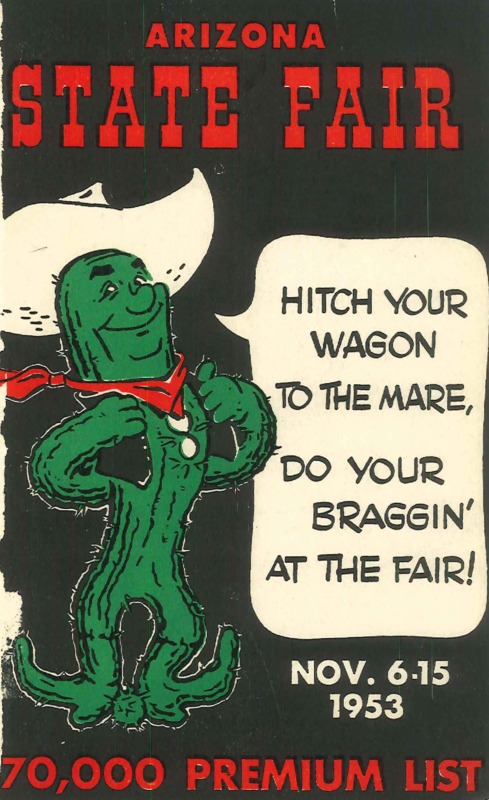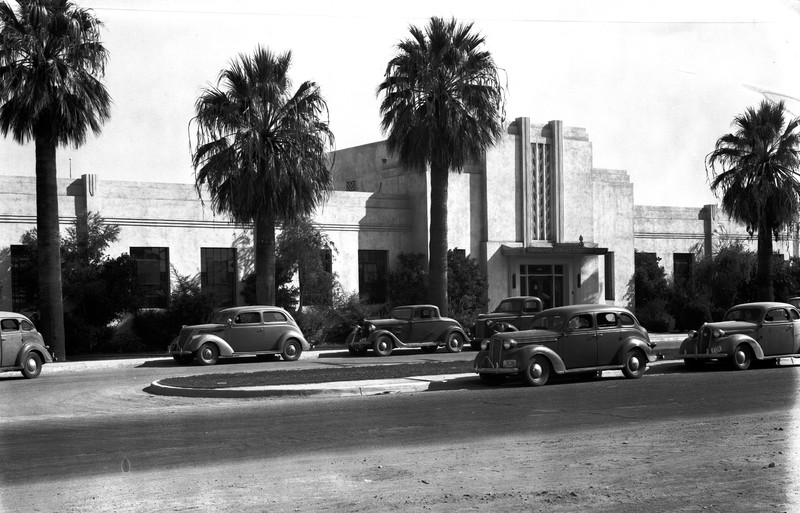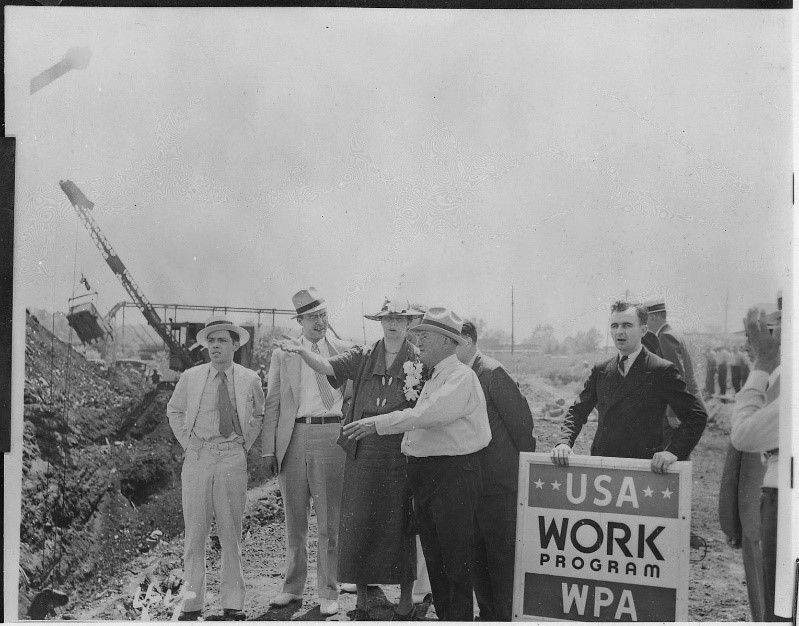
From its humble beginnings amid heavy rainstorms to becoming host from everything from New Deal projects to Hollywood films and even a papal address, what exciting prospects lie ahead for this iconic venue?
During the week of December 4, 1905, heavy rainstorms forced state officials to reschedule Arizona’s first territorial fair. Weeks later, on Christmas Day, the fair opened its doors. Governor Joseph H. Kibbey made a few opening remarks to more than 2,000 Arizonans who had arrived by train to partake in the festivities. Throughout the week, horse racing took place along with competitive company drills and other military exercises.
Beginning in 1905, the Arizona State Fairgrounds--located at McDowell Road and 17th Street--have changed dramatically. Once a rural outpost at the edge of Phoenix, the fairgrounds were eventually surrounded by housing and suburban sprawl and located in the central core of the Phoenix region. Likewise, the facilities have expanded their usage beyond being a centerpiece of the region's agricultural economy; eventually hosting concerts, movies, and other various forms of entertainment. In the 1930s, when state officials suspended the state fair during the Great Depression, the fairgrounds became home to the state's efforts to spur recovery during the New Deal. The fairgrounds housed the Works Progress Administration (WPA) office.
In the early 1930s, Arizona Governor Benjamin Moeur convinced FDR and the federal government to allocate funds for public works projects in the state during the Great Depression. The WPA eventually opened its state headquarters at the south end of the State Fairgrounds and funded a variety of projects throughout the state between 1938 to 1943. The WPA funded hundreds of projects with the intent of putting Americans back to work and improving the country’s infrastructure. Between 1935 and 1942, the WPA put 8.5 million Americans back to work and spent more than $10 million during the Great Depression. The agency funded numerous public works projects that included roads, bridges, schools, libraries, botanical gardens, memorials, and city halls.
In Phoenix, for example, the agency widened and resurfaced over 1,000 blocks of city streets, including five miles of Central Avenue from the Salt River Bridge to South Mountain Park. Throughout the city, workers excavated twenty-eight miles of ditches along roadways, fifty-eight miles of curbs, eighty miles of sidewalks, and five miles of gutters. The agency also planted hundreds of palm and orange trees along Van Buren Street between Phoenix and the Tempe bridge. In Arizona, the agency constructed 690 miles of highway and around 475 miles of miscellaneous city streets. By 1935, the federal government had become the largest employer in Maricopa County, putting $10 million annually into the local economy. Children around the state benefited greatly from the public works projects of the WPA. The WPA built 38 new schools in Arizona, providing the state’s children with better educational facilities. The agency gave Arizona kids 21 new parks and playgrounds to enjoy.
The benefits were equally impressive across Arizona more broadly. The federal government built twelve WPA work camps in Arizona between 1938 and 1943. The WPA placed over 16,000 Arizonans on its rolls and, depending on their job skills, paid them $15 to $25 per week. The agency also improved the state’s highway system. In just five years, the WPA provided funds for 1,714 miles of highway throughout the state of Arizona. Arizona’s population grew substantially in the 1920s and 1930s, which meant the state needed additional methods of transportation in order to attract labor and capital. The WPA also funded several cultural projects in Arizona. The Federal Writers program produced a high-quality State Guide, which gave a detailed description of Arizona’s history, its major cities and towns, and other notable locations of historical significance. During the Great Depression, the Federal Writers Project hired over 6,000 writers to create pamphlets and books that highlight the history of a given state. The Federal Music Project hired musicians from branches of music to perform in concerts for the public to enjoy. This program within the WPA ultimately produced 1,250 free concerts during the Great Depression. In 1936, between January 1 and September 15, over 32 million Americans attended a concert put on by the Federal Music Project. The project hosted a wide range of venues with numerous reputable individual musicians and singing groups, including the Federal Philharmonic Orchestra.
The WPA funded public works projects at the State Fairgrounds. In March of 1936, WPA workers started building the Grandstand with the hopes of completing it by the end of year. The WPA installed nearly 5,000 different seats on the Grandstand, replacing the old wooden seats that had burned down. The structure itself stood at fifty feet long with an adobe wall on three sides. It featured bas-relief medallions, funded by the Federal Artists Project, that feature scenes of everyday life in Arizona. WPA workers also built a new horse racing track inside the Grandstand. Once the WPA finished the project in 1937, the Grandstand hosted numerous types of events, including horse races, rodeos, demolition derbies, and even mud bog spectaculars.
In the second half of the 20th century, the state fairgrounds remained vital, as the state continued to reimagine the fairgrounds for many different purposes. For example, in 1955, Marilyn Monroe filmed a scene from the movie “Bus Stop” on the state fairgrounds. In 1987, while on a trip to Arizona, Pope John Paul II gave a speech at the fairgrounds. Fair officials converted the WPA building into a haunted house, a gem and mineral exhibit, and the base of the Phoenix Roadrunners hockey team.
In 2014, the Arizona Preservation Foundation and other historical preservation groups led an effort to stop the Arizona State Fair and Exposition from demolishing the building. After obtaining a temporary restraining order to prevent the buildings from being razed, preservationists raised public awareness, working with city and state officials to identify opportunities to save the buildings through rehabilitating and reusing them. By 2016, that effort succeeded when the state government committed to returning the structures to their former glory with a $120,000 worth of funding that was matched by the City of Phoenix. Private sources of funding brought to the table by the preservationists, including both foundation gifts and contributions from small donors, contributed more than $120,000 in additional money toward the project. In 2018, the Arizona Exposition & State Fair's Board of Directors held a charrette that explored the future possibilities for the fairgrounds.
edited 12/17/2019: mt
Audio
Images








